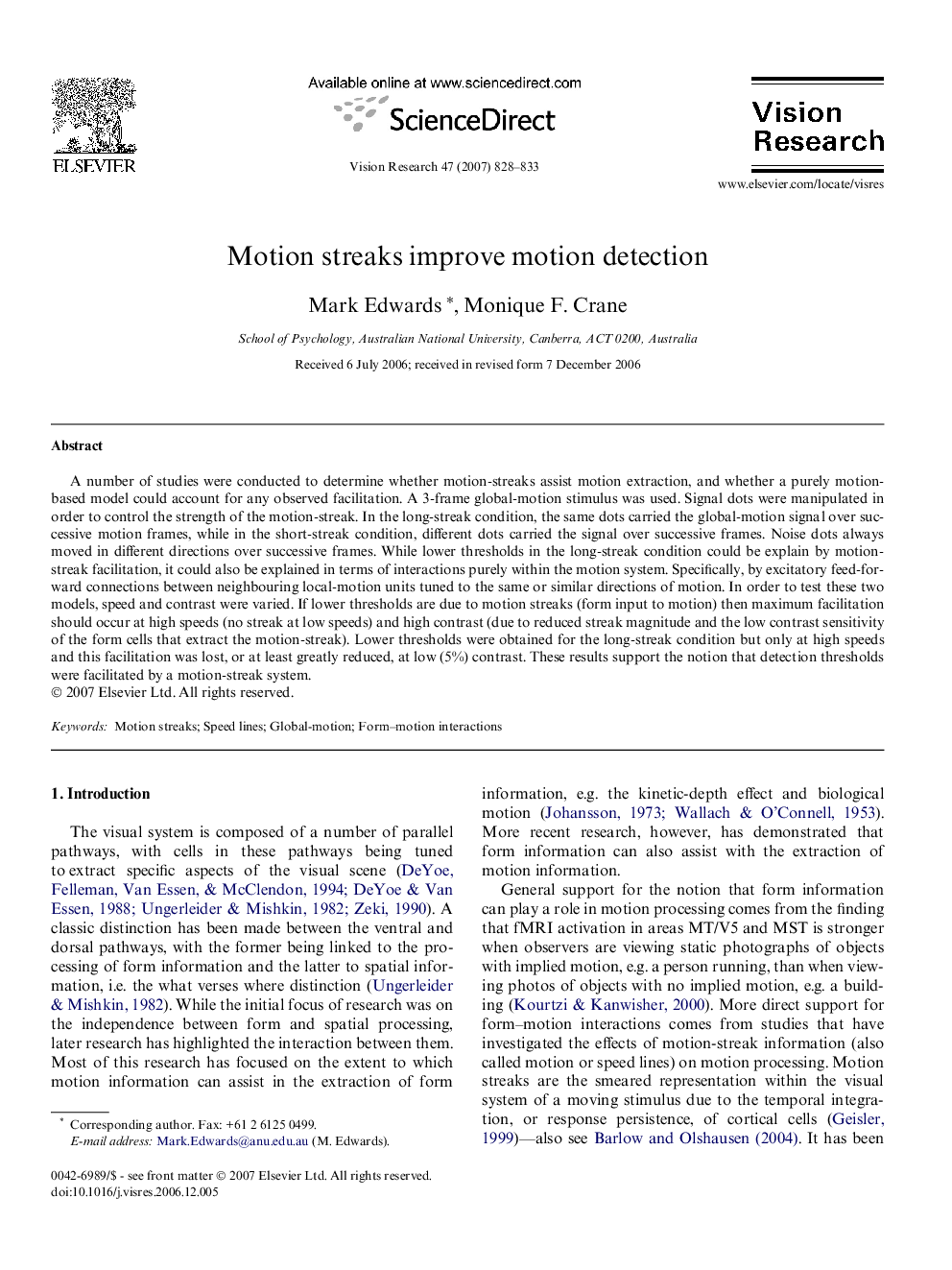| Article ID | Journal | Published Year | Pages | File Type |
|---|---|---|---|---|
| 4035855 | Vision Research | 2007 | 6 Pages |
A number of studies were conducted to determine whether motion-streaks assist motion extraction, and whether a purely motion-based model could account for any observed facilitation. A 3-frame global-motion stimulus was used. Signal dots were manipulated in order to control the strength of the motion-streak. In the long-streak condition, the same dots carried the global-motion signal over successive motion frames, while in the short-streak condition, different dots carried the signal over successive frames. Noise dots always moved in different directions over successive frames. While lower thresholds in the long-streak condition could be explain by motion-streak facilitation, it could also be explained in terms of interactions purely within the motion system. Specifically, by excitatory feed-forward connections between neighbouring local-motion units tuned to the same or similar directions of motion. In order to test these two models, speed and contrast were varied. If lower thresholds are due to motion streaks (form input to motion) then maximum facilitation should occur at high speeds (no streak at low speeds) and high contrast (due to reduced streak magnitude and the low contrast sensitivity of the form cells that extract the motion-streak). Lower thresholds were obtained for the long-streak condition but only at high speeds and this facilitation was lost, or at least greatly reduced, at low (5%) contrast. These results support the notion that detection thresholds were facilitated by a motion-streak system.
